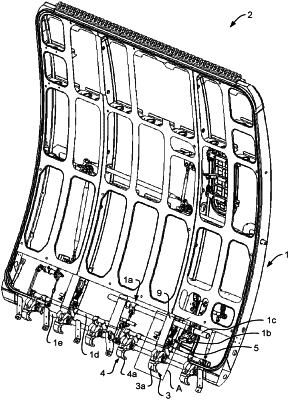| CPC E05B 83/00 (2013.01) [B64C 1/1461 (2013.01); E05C 3/006 (2013.01); E05C 3/02 (2013.01); B64C 1/1415 (2013.01); Y10T 292/0829 (2015.04); Y10T 292/0848 (2015.04); Y10T 292/0851 (2015.04); Y10T 292/0853 (2015.04); Y10T 292/0947 (2015.04); Y10T 292/1043 (2015.04); Y10T 292/1047 (2015.04)] | 19 Claims |

|
1. An actuating system for an actuatable door, the actuating system comprising:
a rotatable latching shaft;
a rotatable locking shaft;
a latching device comprising:
a latch that is non-rotatably mounted to the rotatable latching shaft and adapted for maintaining the actuatable door in a closed position, wherein rotation of the rotatable latching shaft causes a rotation of the latch, and
a latch securing lever that comprises first and second contact surfaces, wherein the first contact surface is adapted to engage with the latch to maintain the latch in a closed and secured position; and
a locking device comprising:
a locking cam that is non-rotatably mounted to the rotatable locking shaft such that a rotation of the rotatable locking shaft causes a rotation of the locking cam, wherein the locking cam drives the latch securing lever and comprises third and fourth contact surfaces, wherein the third contact surface is adapted to engage with the latch to lock the latch in a closed and latched position, and wherein the fourth contact surface is adapted to engage with the second contact surface of the latch securing lever to prevent the latch securing lever from disengaging from a latched position while the locking cam is engaged;
wherein the actuating system further comprises at least one pin that prevents a rotation of the latch relative to the rotatable latching shaft.
|